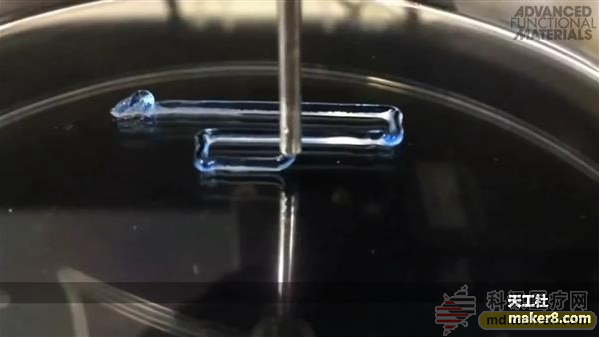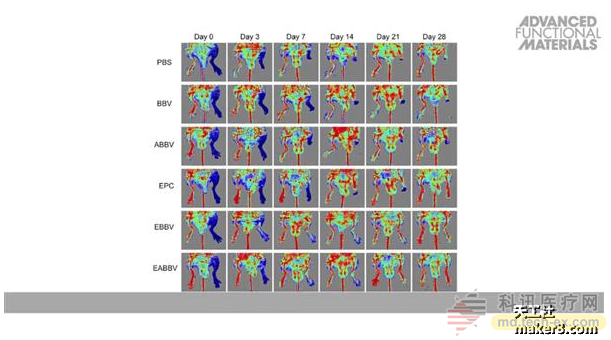Researchers develop 3D printed mixed bio-ink to treat ischemic vascular disease
Release date: 2017-09-13
Researchers at Pohang University of Science and Technology and Busan National University in South Korea have recently made a major breakthrough in 3D bioprinting. They have successfully developed a new hybrid bio-ink that can be used in 3D printed structures that are critical for treating a variety of blood circulation-related diseases. The study has been published in the journal Advanced Functional Materials.
When blood circulation is limited by occlusion or vascular damage, this limited blood supply may further damage related organs and tissues. This condition is called ischemia and can cause various diseases, but its treatment is still relatively limited. Cell-based therapies are often used, but the treatment is uneven. 
Many cell therapies for ischemic problems use endothelial progenitor cells (EPC) to stimulate new blood vessel formation. One problem with this is that the ischemic site is usually hostile to EPC, which limits the survival and self-differentiation of EPC due to malnutrition, oxidative stress, inflammation, and the presence of reactive oxygen species.
One solution to this problem is to use a decellularized extracellular matrix (dECM). dECM is basically a framework or skeleton of different organic tissues from which cells are removed. Due to its composition, structure and biomechanical properties, dECM is ideally suited to encourage cell survival and proliferation in new environments.
Previous studies used dECM from a variety of different organizations to develop 3D printed bio-inks, and the researchers succeeded in enhancing tissue functionality and cell viability. This time, Korean researchers want to see if they can similarly use a blood vessel dECM-based ink to treat vascular problems caused by ischemia. They mixed the blood vessel dECM from the aortic tissue of a pig with a sodium alginate hydrogel to make a mixed bio-ink.
Using this hybrid bio-ink and a 3D coaxial cell printing method, the Korean research team produced biological blood vessels (BBV). The ease of expansion of 3D printing technology means they can produce a range of different sizes of BBV for testing. The researchers developed a 3D printing system and used commercially available coaxial extrusion nozzles. After printing is complete, the blood vessels are incubated at 37 degrees Celsius for 30 minutes, during which the hydrogel dissolves, leaving a hollow structure. 
The researchers tested these hollow BBV tubes in vitro, including periodic measurement of cell viability. The results showed that the survival, proliferation and differentiation of EPC were greatly improved. The researchers also tested the 3D-printed BBV in laboratory mice with ischemic symptoms in the hind limbs. They implanted BBV near the affected blood vessels and found that BBV promotes rapid recovery of blood vessels. BBV acts both as a vascular implant and as a drug delivery system, providing an environment to stimulate EPC and develop into functional vascular tissue.
Researchers believe that this new hybrid bio-ink has many potential applications, including the regeneration of ischemic diseases, the replacement of damaged blood vessels, the direct creation of vascularized tissues/organs, and the manufacture of vascular models and biochips.
Source: Tiangongshe
Press Lock Wire Seals are combined by a piece of wire and a plastic locking body. The locking body has some anchors to provide locking mechanism. So they are also called anchor seals. The anchor seal body is always made with polycarbonate material.
The anchor seals are originally designed as a replacement for lead seals. The application of the anchor seals include: Hospital Equipment, EMS Equipment, ATM Cassettes, Zipper Bags, Coin Boxes, Storage Units, Fibre Drums etc.
Press Lock Wire Seals,Press Lock Meter Seals,Press Lock Wire Seal,Meter Seals In Press Type
Wenzhou Haoshi Light Industrial Products Co., LTD , https://www.economicseals.com